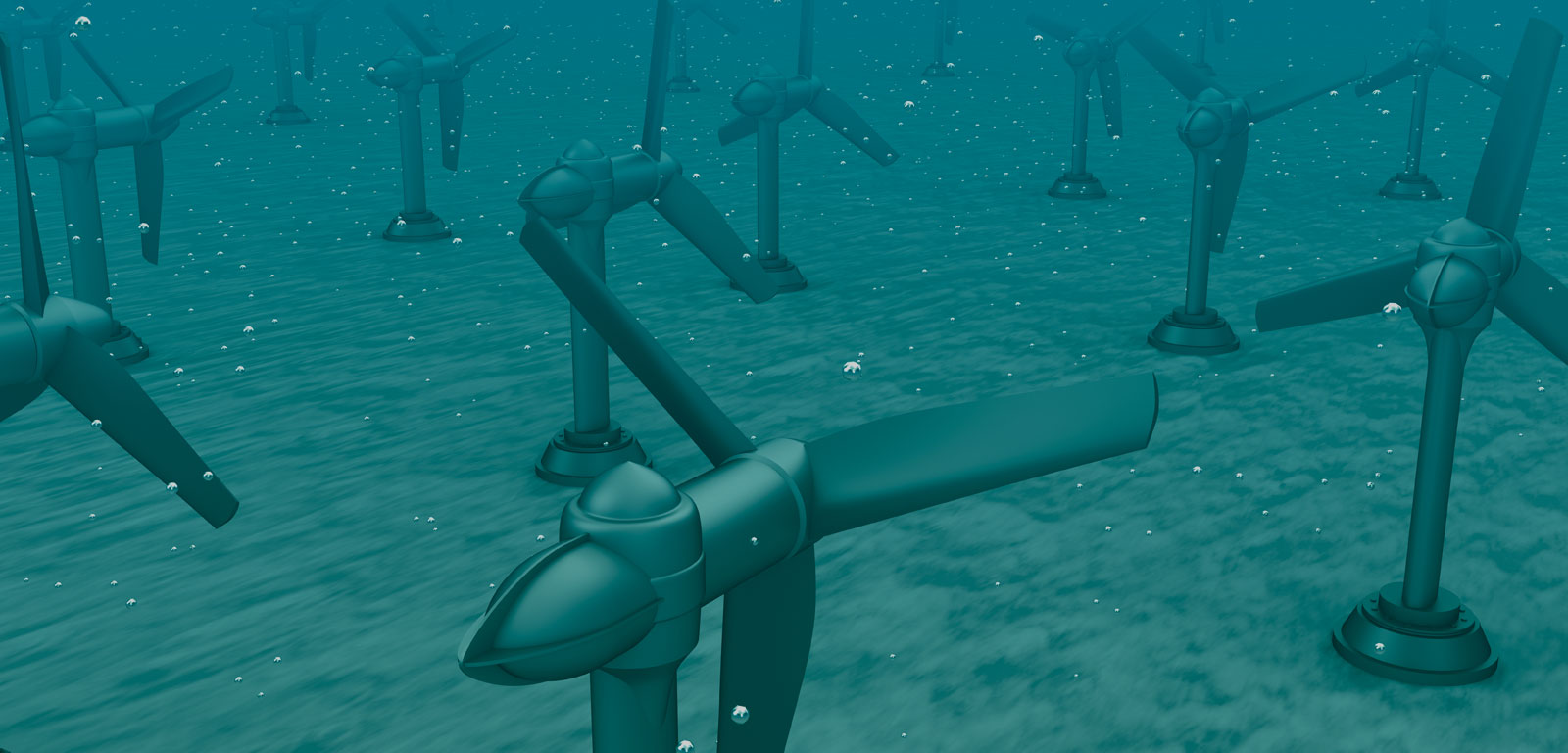Subject
Environmental conditions for marine renewable concepts
General details of the subject
- Mode
- Face-to-face degree course
- Language
- English
Description and contextualization of the subject
The aim of this course is to provide to the students the necessary knowledge about the different the environmental conditions and environmental loads that a marine renewable project has to consider. The course will provide the skills for a rational design criteria for load assessment on marine renewable structures. Environmental conditions cover natural phenomena which may contribute to structural damage, operation and failures. The most phenomena that will be analysed will be wind, waves, currents and tides. Environmental loads are the loads caused by environmental phenomena. They will be studied paying special attention on the most important effects over the structure and its performance.The course is intended to provide students with the following benefits:
(1) Understanding the concept metocean conditions and its importance for offshore structures
(2) Understanding and capabilities for wave conditions assessment
(3) Understanding and capabilities for wind conditions assessment
(4) Understanding and capabilities for sea level and currents conditions assessment
(5) Ability to evaluate environmental loads and design conditions
Teaching staff
| Name | Institution | Category | Doctor | Teaching profile | Area | |
|---|---|---|---|---|---|---|
| MARTINEZ DE ALEGRIA MANCISIDOR, IÑIGO | University of the Basque Country | Profesorado Agregado | Doctor | Bilingual | Electronic Technology | inigo.martinezdealegria@ehu.eus |
| GUANCHE GARCIA, RAUL | Otros | Otros | Doctor | raul.guanche@unica.es | ||
| MENENDEZ GARCIA, MELISA | Universidad de Cantabria | Otros | Doctor |
Competencies
| Name | Weight |
|---|---|
| Ability to understand metocean conditions fundamentals and its application to offshore engineering projects | 25.0 % |
| Ability to handle computer programs for metocean conditions assessment | 25.0 % |
| Ability to organize information and produce effective reports individually and in a team | 25.0 % |
| Ability to communicate in various formats: group discussion, and oral presentations | 25.0 % |
Study types
| Type | Face-to-face hours | Non face-to-face hours | Total hours |
|---|---|---|---|
| Lecture-based | 17 | 22 | 39 |
| Applied classroom-based groups | 3 | 8 | 11 |
| Applied computer-based groups | 10 | 15 | 25 |
Training activities
| Name | Hours | Percentage of classroom teaching |
|---|---|---|
| Classroom/Seminar/Workshop | 3.0 | 100 % |
| Expositive classes | 17.0 | 100 % |
| Groupwork | 15.0 | 0 % |
| Presentations and Papers | 5.0 | 0 % |
| Systematised study | 25.0 | 0 % |
| Working with it equipment | 10.0 | 100 % |
Assessment systems
| Name | Minimum weighting | Maximum weighting |
|---|---|---|
| Attendance and participation | 40.0 % | 60.0 % |
| Writing up the teamwork | 15.0 % | 35.0 % |
| Written examination | 15.0 % | 35.0 % |
Learning outcomes of the subject
Understanding the relevance of environmental conditions in the marine and coastal areas, both for resource estimation and loads on structureThe knowledge of the physical basis and the climate behavior of the most important met-ocean conditions (wind, waves, sea level and currents).
To know the different data sources (instrumental and numerical models) that provide information of environmental conditions and be able to manage them
To master the statistical tools (e.g. occurrence tables, probability distributions, extreme analysis) to elaborate a met-ocean report for an offshore/coastal engineering project
To identify the most important phenomena and calculation methods to estimate loads, as well as the main international rules and standards governing marine renewable energy projects.
Temary
Lesson 1 Wind conditionsIntroduction to wind climate. Wind data (instrumental and numerical data), wind modeling, short term and long term wind statistics.
Lesson 2 Wave conditions
Introduction to wave climate. Wave data (instrumental and numerical data), wave modeling, short term and long term wave statistics.
Lesson 3 Current and tide conditions
Introduction to currents and tide climate. Currents and tide data (instrumental and numerical data), currents and tide modeling, short term and long term statistics.
Lesson 4 Environmental loads
Review of the most important phenomena and calculation methods.(1)Wind loads: pressure and forces, (2)Wave loads over slender elements, (3) Wave loads over large volume structures, (4) Wave overtopping, impact and slamming forces, (5)Currents loads description
Lesson 5 Review of rules and standards for marine renewables
Review of the most common and applied offshore rules and stantards from the metocean assessment point of view.
Bibliography
Basic bibliography
[1] RG Dean, RA Dalrymple, Water wave mechanics for engineers and scientists. 1991. World Scientific Pub. Singapure.[2] Mei, C. C. The applied Dynamics of Ocean Surface Waves. 1989. World Scientific Pub. Singapure.
[3] Wind Energy Explained: Theory, Design and Application, 2nd Edition James F. Manwell, Jon G. McGowan, Anthony L. Rogers ISBN: 978-0-470-01500-1 December 2009
[4] Wind Turbines Fundamentals, Technologies, Application, Economics Hau, Erich Ed. Sprimger 2013
[5] The European Wind Energy Association (EWEA). Wind in Power: European Statistics. February 2015. http://www.ewea.org/fileadmin/files/library/publications/statistics/EWEA-Annual-Statistics-2014.pdf
[6] Joao Cruz. (2008). Ocean Wave Energy. Current Status and Future Prespectives. Green Energy and Technology(Virtual Series). ISBN: 978-3-540-74894-6 (Print) 978-3-540-74895-3 (Online). Springer.
[7] Falnes, J., 2002, "Ocean waves and oscillating systems: linear interactions including wave-energy extraction", Cambridge University Press.
Journals
[9] Ocean Engineering[10] Renewable Energy
[11] Coastal Engineering
[12] Wind Energy
[13] Marine Structures
[14] Journal of Fluid Mechanics
[15] Applied Ocean Research


